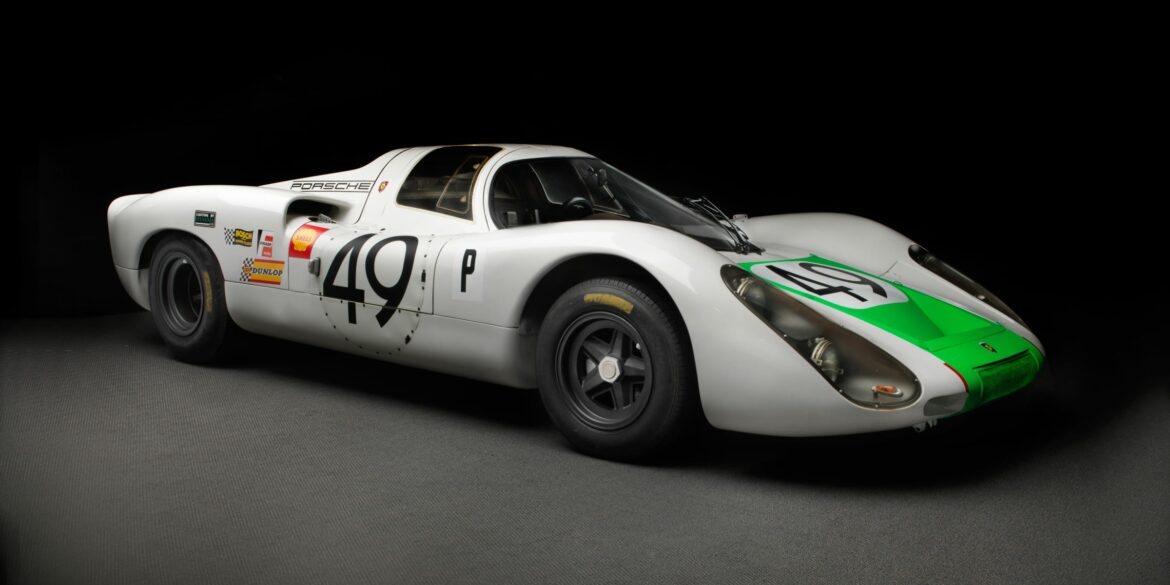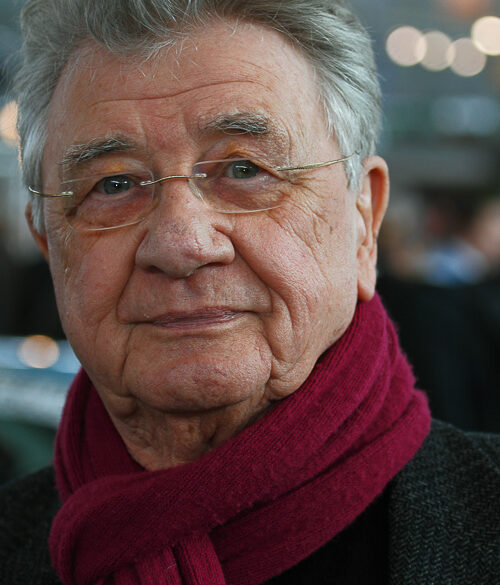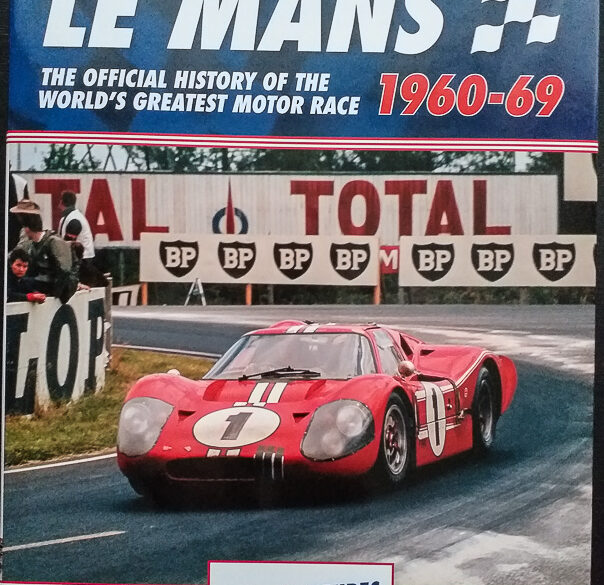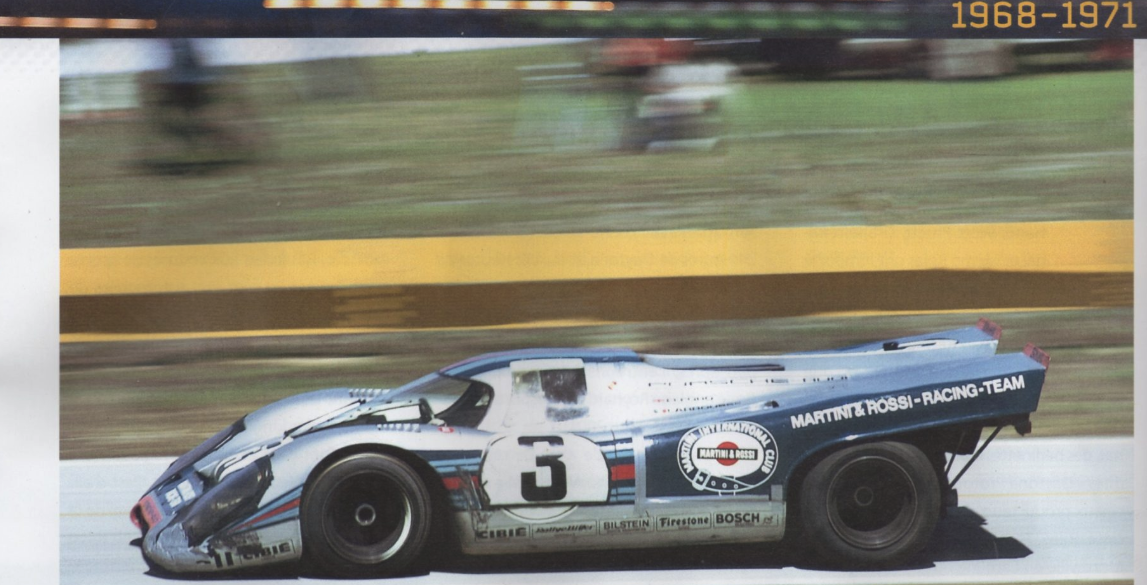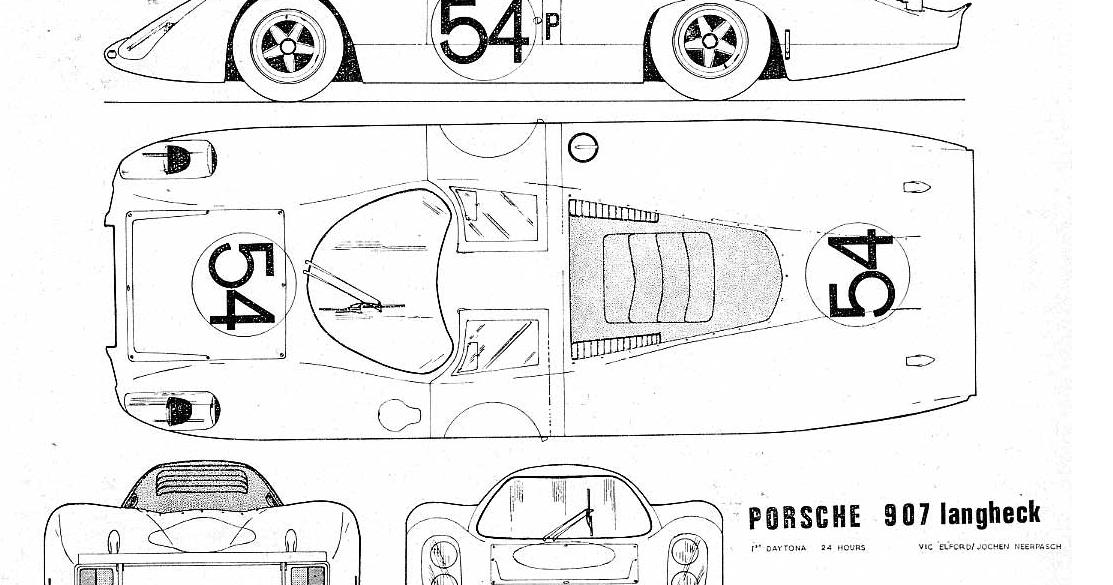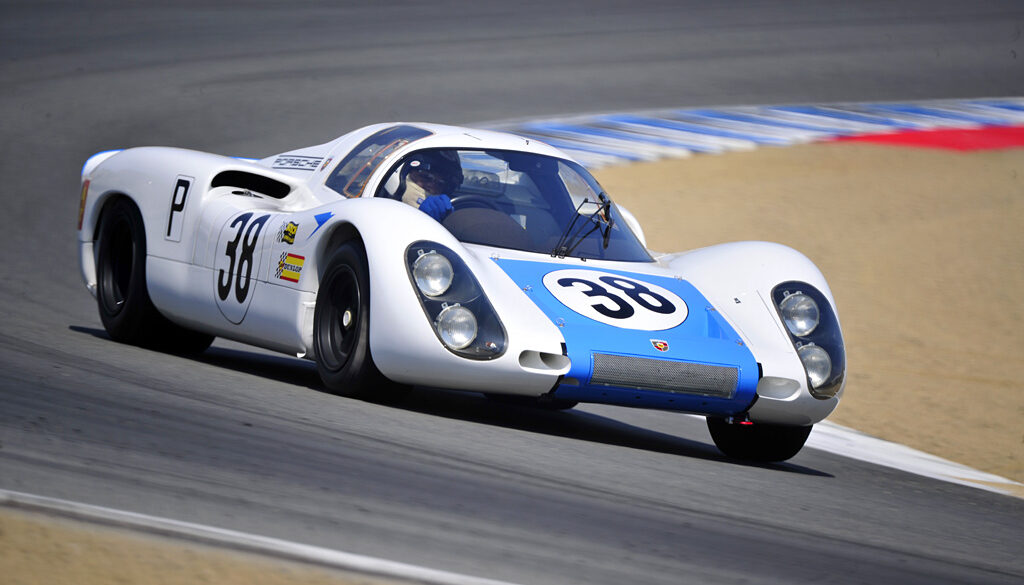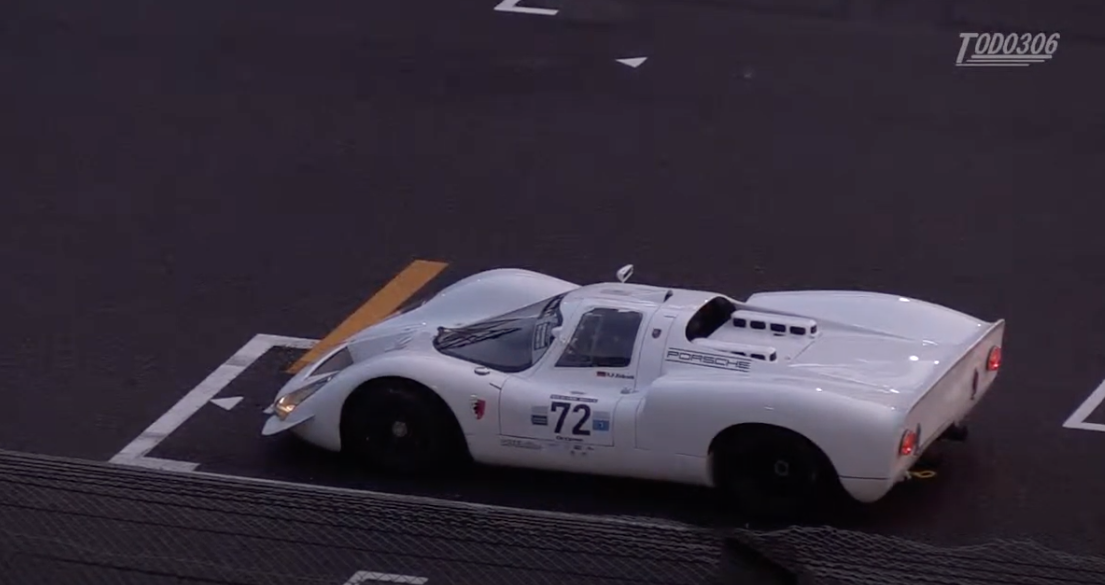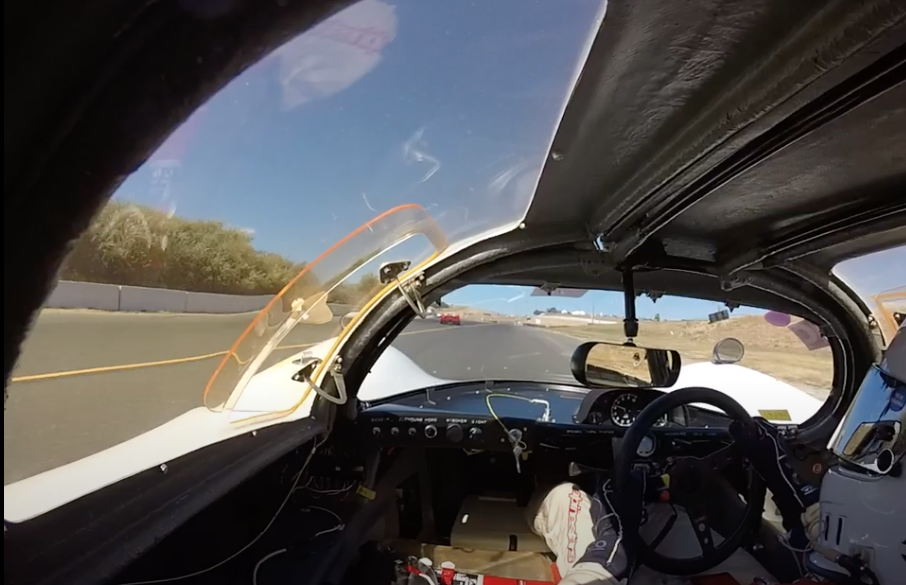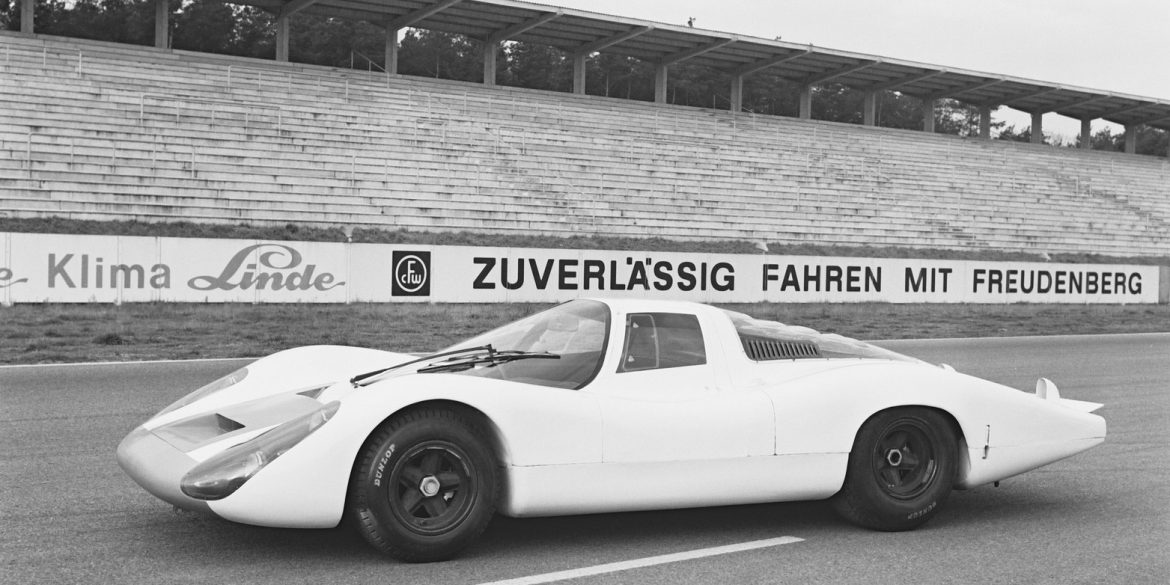The K in 907K stands for short-tail ("Kurz" in German). Porsche brought four new 907s with short-tail bodies to the rugged Sebring circuit in March 1968. Seven laps in, one 907 was out, and a second suffered engine troubles after 46 circuits. Not to worry, as the other two dominated the race. Porsche 907 024 with drivers Hans Herrmann (Germany) and Jo Siffert (Switzerland) went from the pole position to a dominating victory at an average speed of 102.512 mph, 10 laps ahead of its sister 907.
In 1967, Porsche brought a new kind of car to Le Mans. The 907 had a small flat-six and incredibly low bodywork, was aerodynamically optimized. Ford won Le Mans, but the 907 proved its worth. At the end of March, 1968, Porsche had four type 907 chassis ready, and brought them to the 24 Hours of Daytona. Fully developed, the 907 now used a 2195 cc aircooled, magnesium alloy flat-eight with Bosch fuel injection, good for 278 bhp at 8700 rpm. The 907LH (lang heck, or long tail) was slippery, stonking fast and wicked hard to drive. And it won.
Porsche 907 K Pictures...
Mont Ventoux, 18 June 1967 – Rolf Stommelen won this hillclimb driving a Porsche 910/8 Bergspyder Rolf Stommelen was one of Germany’s leading racing drivers for over a decade and if as the title (above) of his biography implies, he could drive anything anywhere, this was largely true. Although his...
Hans Herrmann at the Retro Classics in Stuttgart, Germany 2010 Hans Herrmann, one of the most successful and popular racing drivers to join the Porsche AG works team, celebrates his 90th birthday this year on February 23. The endurance and Monoposto specialist, born in Stuttgart in 1928, is regarded as...
Le Mans 24 Hour, 13-14 June 2015: Lined up prior to the formation lap are (from L-R) – the #18 Porsche 919 Hybrid driven by Marc Lieb/Romain Dumas/Neel Jani (finished 5th); #17 Porsche 919 Hybrid driven by Timo Bernhard/Brendon Hartley/Mark Webber (finished 2nd); #19 Porsche 919 Hybrid driven by Earl...
© White Racers from Zuffenhausen: Porsche 904, 906, 907, 908, 909, 910 In 2018, we reviewed one of the other books in this series, Porsche Spyders 1956-1964, and this year we will have a couple more to do. White Racers from Zuffenhausen, is another in this series, and as we...
Motor Racing – The Pursuit of Victory 1963-1972 by Steve Wyatt © Veloce Publishing Limited The age of motorsport, when an aspiring photographer could amble around the paddock snapping world championship drivers, team personnel and stripped race cars, is long gone. Today, even with the required media accreditation, you have...
Le Mans: The Official History 1960–69 by Quentin Spurring © Virtual Motorpix/Glen Smale This edition of Quentin Spurring’s fabulous series covering the Le Mans 24 Hours decade-by-decade, concerns the 1960s. Many will agree that the decade, 1960 to 1969, saw some of the most innovative race cars, and with relatively...
This large poster announced the 50th anniversary of the first victory by the Porsche 917 at the 1970 Le Mans 24 Hour race It all started back in early March of 2020. I had a trip planned to visit the Porsche Museum in Stuttgart, to conduct another extensive photo shoot...
Porsche 907 LH Pictures ...
Porsche 907 Video...
Porsche 907 In Car Driver POV on Track Porsche 907K Sonoma Raceway CSRG Vintage race ...
Porsche 907 Nürburgring Video ...
Reviewed and edited by Rex McAfee The legend of Porsche 907 K 025 Imagine a race victory so popular at Porsche that a factory poster was made highlighting the driver’s expression of both exhaustion and victory. ‘Quick Vic’ Elford’s drive, along with co-driver Umberto Maglioli, at the 1968 Targa Florio...
The Porsche 907 has probably received the least amount of coverage of all Porsche’s 1960s ‘plastic prototypes’. But this lack of attention is unjustified, as the 907 played just as important a role in Porsche’s rise to motorsport stardom as any of the other successful Porsche racers of the time....


